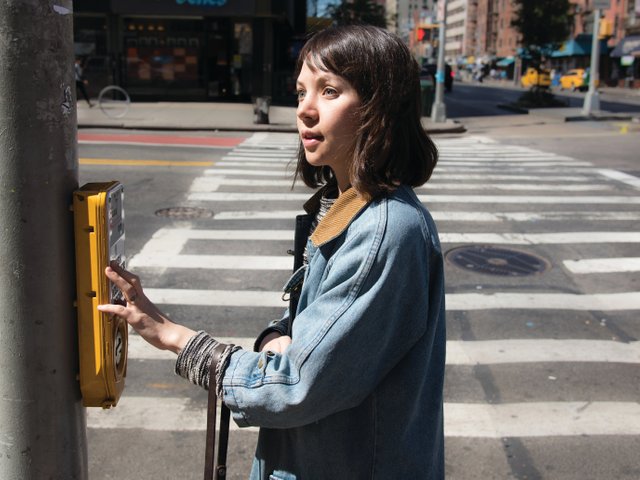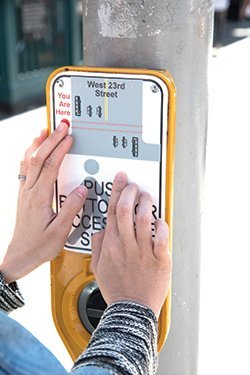
People in many cities risked their lives every time they cross the street. In New York City, pedestrian deaths account for the largest proportion of road traffic deaths since 2006, according to government data. For the visually impaired, the situation becomes very serious and it gets worse.
Over the past summer, Touch Graphics designers, working on multi-sensory navigation technologies, have worked with New York's Transportation Department to test tactile maps - 3D detailing and Braille text - at a busy intersection near Center for the care of the blind. The project is part of the city's initiative to eliminate infant mortality. If successful, the maps could be installed in all 13,000 traffic lights in New York, said Stephen Landau, president of Touch Graphics.
Landau says such maps are important because increasingly complex street designs make it difficult for blind pedestrians to see what they will face once they leave the pier. The technology was tested in Denmark and Sweden, but New York's experience is the first in North America, Landau said, adding that San Francisco and Toronto are testing the technology soon.

Maps show the number of traffic lanes a person must cross and the direction of traffic.
Credit: Liz Tormes
The Landau team made maps using UV printing, in which ink is printed on a surface and then passed under ultraviolet light to be processed before drying it with air. This process allows for more detail and less diffusion of ink, which is very useful in creating graphics that are prominent and clear enough to feel tactile. Each map uses three-dimensional, high-contrast, high-contrast shapes to capture everything a person can pass through as he crosses the road. For example, the prominent circle labeled "You are here" written in Braille and standard text indicates the starting point for pedestrians, while the dotted line indicates the path to walk. The oval shapes symbolize the vehicles, which have a prominent arrow at the end of each to show traffic in a particular traffic lane, while a row of black bars symbolizes the bicycle lane, and the islands show the center of the road in its actual forms.
Selh Amodrain, who teaches touch technology at the University of Michigan and has not been involved in the project, believes these maps can change the lives of many people.
"The complicated traffic intersections in Ann Arbor and Michigan are limiting where they can live," says Omdrain, who suffers from vision loss. "I think it would be a great idea, because when you get to the street, it's always difficult to know how many traffic lanes you have to pass," she said. Although Omodrain can estimate the volume of traffic by hearing, and can sense the direction it comes from, it adds that labeling at traffic jams can be a useful feature.
Hi! I am a robot. I just upvoted you! I found similar content that readers might be interested in:
http://www.popphoto.com/rebirth-tintype-an-old-photographic-medium-is-revitalized
Downvoting a post can decrease pending rewards and make it less visible. Common reasons:
Submit
It's so important to find tools and solutions for blind accessibility, such as this. Thanks so much for sharing! Are you aware of these electronic glasses for the blind? Basically they're glasses for blind person or those with visual impairment to use for everyday tasks. I think it's so vital that we continue to develop options such as these for those who need it. Great read :)
Downvoting a post can decrease pending rewards and make it less visible. Common reasons:
Submit